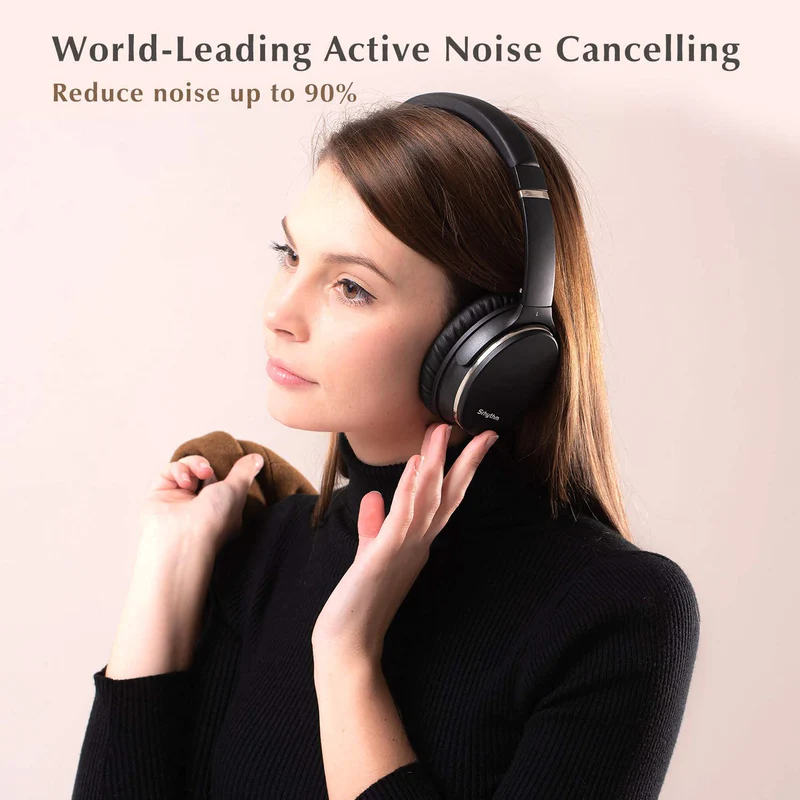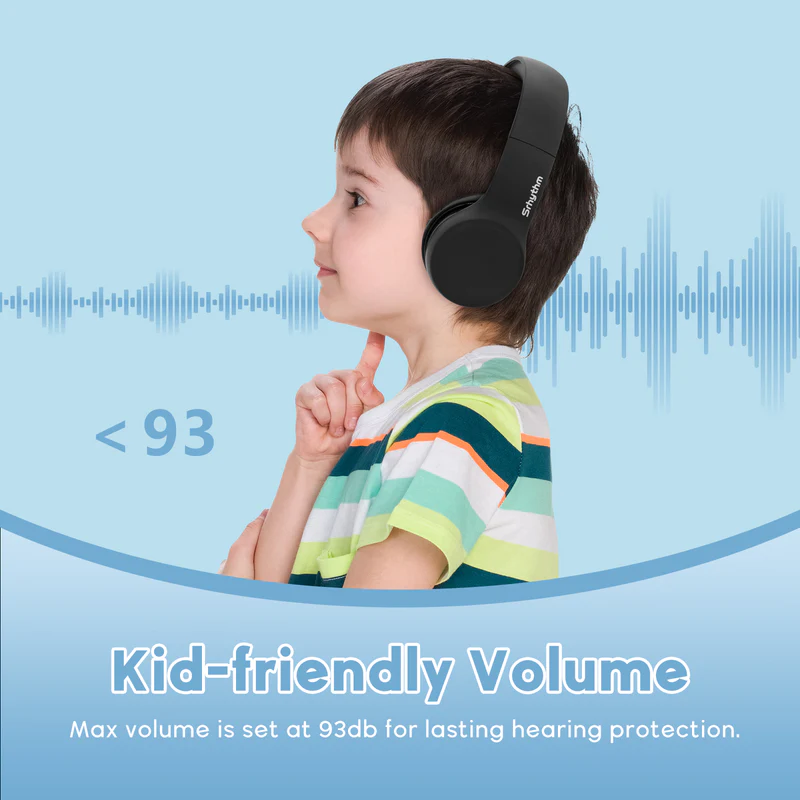The world of headphones is vast and varied, with options that cater to different preferences, environments, and uses. Among the many types of headphones available, over-ear and on-ear designs are the most common for anyone seeking quality audio and active noise cancellation. But how do you decide which is best for you? In this guide, we'll discuss the critical differences between over-ear and on-ear noise-cancelling headphones and help you make an informed decision.
Over-Ear vs. On-Ear: A Quick Overview
Before delving into specifics, it's crucial to understand the fundamental difference in design between over-ear and on-ear headphones.
Over-Ear Headphones
Over-ear headphones, sometimes referred to as "circumaural" headphones, have large ear cups that completely envelop the ear. This design provides excellent noise isolation, as the ear cups form a seal that effectively blocks out ambient noise.

On-Ear Headphones
On the other hand, on-ear or "supra-aural" headphones are smaller and rest directly on your ears rather than enclosing them. While they still offer a degree of noise isolation, they typically allow more ambient noise to reach the ear canals compared to over-ear models.

Now, let's dive deeper into the specifics of these two types of headphones, considering factors such as sound quality, comfort, portability, and active noise cancellation.
Sound Quality: Larger Drivers and Bass Response
One of the primary considerations when choosing a pair of headphones is, undoubtedly, the sound quality.
Over-ear headphones are generally known for providing superior sound quality due to their larger drivers. Larger drivers move more air and, as a result, are capable of delivering a more potent bass response and a wider sound stage. This gives you rich, immersive headphone sound that's hard to beat.
On-ear headphones, while they may not have the same depth of bass and sound stage due to their smaller size, are more than capable of delivering crisp, clear audio. If you primarily listen to music genres that aren't as dependent on heavy bass, such as classical or folk music, on-ear models might suit you just fine.
Comfort: Memory Foam and Extended Listening Sessions
Comfort is a significant factor, especially if you plan on using your headphones for extended listening sessions. Here's where personal preference plays a significant role.
Over-ear headphones, with their larger ear cups usually cushioned with memory foam, are often deemed more comfortable for long-term wear. The fact that the ear cups encase the entire ear reduces the pressure on the ear itself.
On the other hand, on-ear headphones, due to their lighter weight, can be less fatiguing to wear over long periods. However, since they rest directly on the ears, they might cause some discomfort after prolonged use, depending on the user's sensitivity.
In the end, comfort largely depends on individual preferences and comfort thresholds. Trying on different models for a while before buying is a smart move.
Portability: Easier to Carry?
If you're always on the go, portability becomes a significant factor in your choice of headphones. Generally speaking, on-ear headphones tend to be more compact and lightweight, making them easier to carry around in your bag or even in a large pocket. Many on-ear models are also foldable, further enhancing their portability.

On the other hand, over-ear headphones are usually bulkier due to their larger ear cups, making them a bit less travel-friendly. However, many models come with hard-shell carrying cases that provide protection during transport.
Noise Cancellation: Active Noise Cancellation vs. Noise Isolation
One key advantage of both over-ear and on-ear headphones is their ability to reduce unwanted background noise. However, the degree and method of noise reduction differ between the two.
Over-ear headphones, with their full-ear design, naturally provide excellent passive noise isolation. The large ear cups physically block a good deal of external noise. When combined with active noise cancellation (ANC) technology, over-ear headphones can offer a virtually silent listening environment.
On-ear headphones, while they also offer some degree of passive noise isolation due to their cushioned pads pressing against the ears, generally can't block out as much ambient noise as over-ear models. However, with active noise cancellation technology, they can still effectively minimize various types of low-frequency noises, such as the hum of an airplane or an air conditioner.
Battery Life: How Long Can You Listen?
The battery life of wireless headphones is an important consideration for many users. Both over-ear and on-ear headphones can provide extended battery life, but the larger size of over-ear models often allows for larger batteries. This means you might get more hours of play music before needing a recharge with a pair of over-ear headphones.
That said, advancements in battery technology and energy-efficient designs mean many on-ear models offer impressive battery life despite their smaller size. It's always a good idea to check the specific battery life of any headphones you're considering, as this can vary significantly between different models.
Conclusion: It All Comes Down to Personal Preference
As you can see, there's no definitive answer to whether over-ear or on-ear headphones are better. It largely comes down to your personal preference and specific needs.
Do you prioritize immersive sound and don't mind a larger size? Then over-ear headphones, with their superior bass response and excellent noise isolation, could be your best bet. If you're always on the move and prefer something lighter and more compact, on-ear headphones might be the ideal choice.
At Srhythm, we offer a variety of high-quality over-ear and on-ear headphones to cater to different preferences and needs. Each of our headphones is designed with comfort, sound quality, and active noise cancellation in mind, ensuring a fantastic listening experience no matter which style you choose.
Still unsure about which type to go for? Our headphone guide and news may provide further insights to help you make an informed decision.




